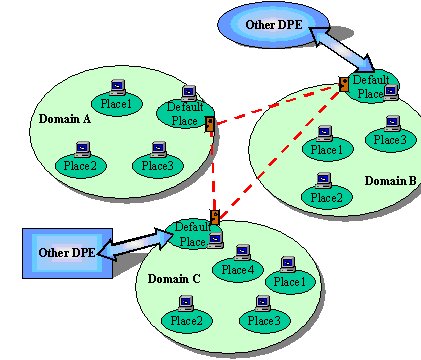![]()
|
MESIS has been
designed with the goal of providing an integrated environment
that addresses all typical management issues of complex organizations.
Organizations usually consist of several departments, even geographically
distributed over the Internet. Each department has its private LAN,
and needs to interact via gateways with other departments to accomplish
coordinated tasks. The provision of an Internet service, for instance,
may span several organization boundaries. In addition, when different
departments of one organization have to communicate via the Internet,
the system should grant the same levels of security and QoS of intranet
communication. Moreover, the globality of the scenario addressed by
MESIS imposes to face up to the issue of scalability.
|
||
|
The core part
of the MESIS project is its architecture that provides a distributed
infrastructure with a set of facilities for the design and
the development of complex network-centric applications (see Figure
2). All facilities are implemented on top of the MESIS DPE layer
by a set of coordinated mobile agents. |

Figure 2. MESIS Architecture for Management Applications (click here for a larger view of the picture) |
|
The MESIS Upper Layer Facilities (ULF) represent advanced operations and support directly the application development:
